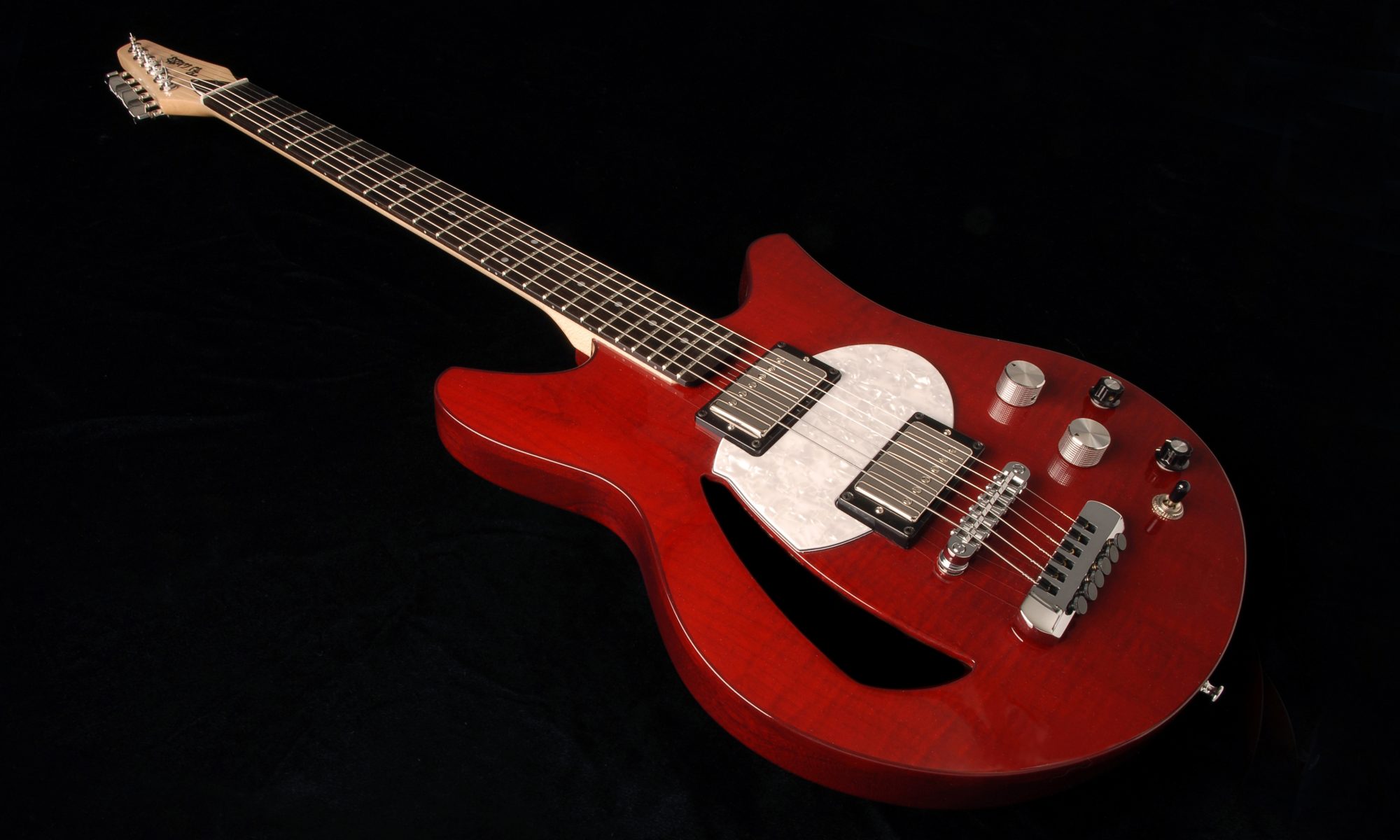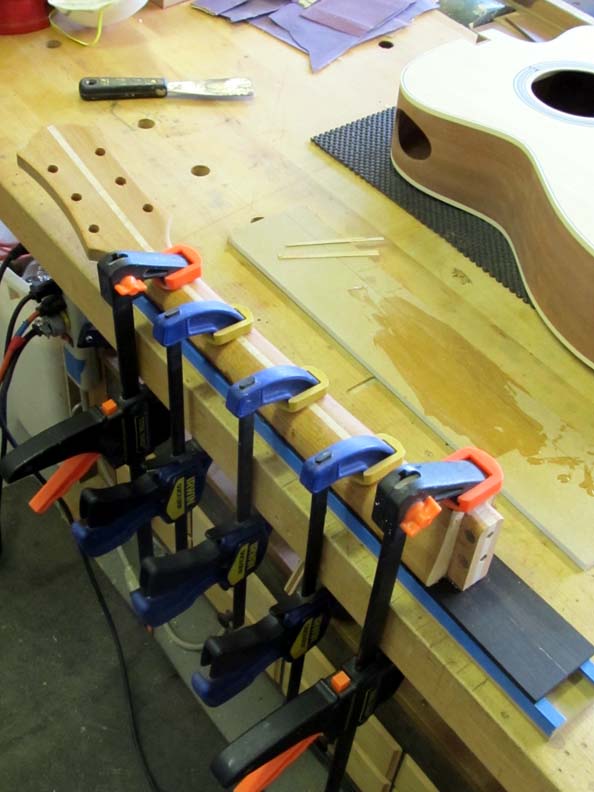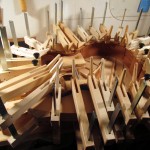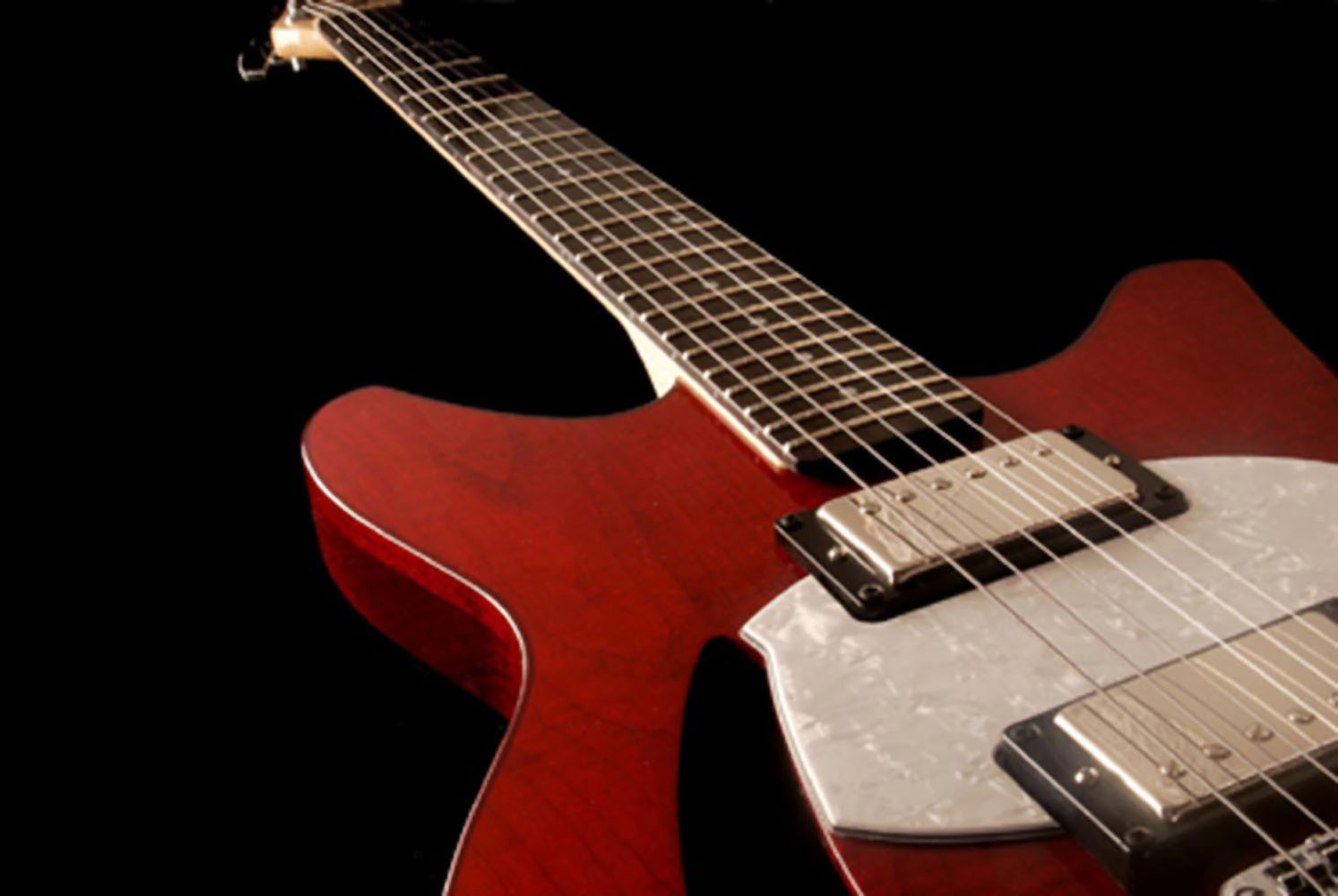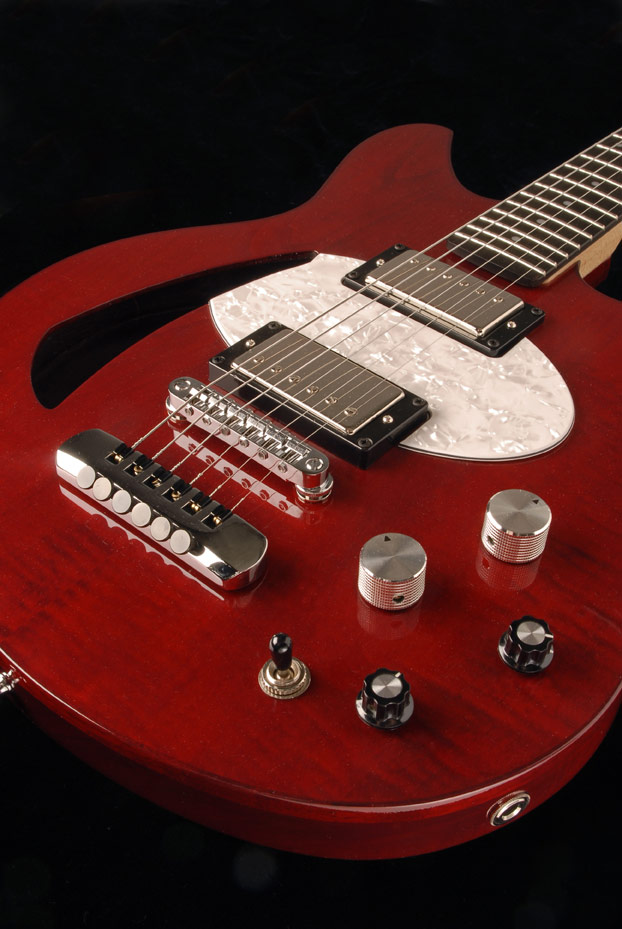Two soprano guitars under construction – working backwards from “ready for finishing” to “selecting materials.”

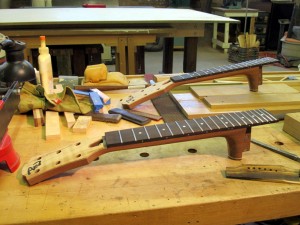









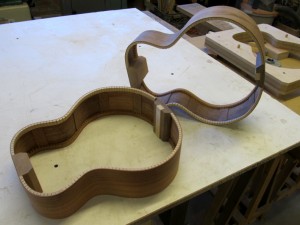




Intervals
Intervals
It is not very hard to make a guitar that works. By that I mean that it is not so hard to imagine a stringed instrument that is capable of producing musical sound. Somewhere in our distant past, someone figured out that attaching a taut string over a large gourd with a hole cut out of it to allow the sound of that plucked string to escape was fairly easily accomplished. A few modifications here and there, a way to attach the taut string to the gourd, perhaps slicing off a part of the gourd to allow a flat surface that could vibrate with the motion of the plucked string to be attached and creating a resonating chamber, were probably thought through early on. There are early single and two string instruments (Dotar) that appear in the Middle East millennia ago. The Kora, sometimes called the African harp, is a multi-stringed instrument that looks as though it has changed little over centuries. It is also not hard to see how the natural variability of gourds would likely have given way to a more consistently crafted bowl of wooden strips, mimicking the gourd shape, and a more “engineered” connection for taut strings, that became a lute, and thus giving a name to the craft of stringed instrument making – lutherie, and the craftsman’s profession – a luthier. Continue reading “Intervals”
Work In Progress
Variation on an existing style to incorporate more of the characteristics of a Telecaster.
Various Work On OM Style Acoustic
The Well Tuned Instrument
Why every guitar player should want a well set-up instrument.
Just like a well-tuned automobile, a well set-up guitar works better, and while we all know when our car is running poorly, a lot of guitar players, especially newer and younger ones, don’t know that their guitar is set-up poorly. I think it starts with one’s first guitar. Most people, whether a parent for a child, or an individual who’s older but wanting to learn to play, may prefer to buy a cheaper instrument than a more expensive one for the obvious reason, what if he, or she doesn’t take to the instrument and doesn’t learn how to play? Won’t that just be money wasted? Sadly, the prophecy often becomes self-fulfilling, because cheap guitars are almost never set-up well when they come from the factory, are therefore not easy to play to achieve satisfactory sound, and lead to joy killing frustration. All this, and the beginner never even knew that much of the problem was because of poor set-up of the instrument. One of things I’ve learned over many years is that while a good player can make a mediocre instrument sound good, the beginner, if possible, should learn on a good instrument. The rewards of practice will come much more quickly. That said it is also a sad truth that even long time players are often ignorant of how to make the adjustments to their instruments to allow them to play better. So, a little primer on what a guitar is and isn’t, and then the theory of how to improve playability. I’ll stick to acoustic guitars for now (maybe do electrics another time, though the theory is the same.) Continue reading “The Well Tuned Instrument”
Ongoing Work 2
Two OM (Orchestral) sized bodies in work. Getting ready to glue top to sides. Second picture with clamps in place during glue-up of top to sides.
Ongoing Work
-
Guitar necks. Picture on left, I’m creating a neck-blank sandwich – i.e. stacking wood in dimensioned thicknesses and gluing them together to form a blank from which rough necks can be cut. Picture to its right, some roughed-out necks that have already been somewhat profiled and now await carving and tapering to shape.
-
(Top row/right) Gluing up bottom to sides on one guitar, and (Bottom row /left) checking the fit between the rough neck-blank and connection to another guitar body.
-
More progress on an OM style I have in work. Body is bound, neck is mostly carved, headstock veneered and shaped. This one has a sound port in the upper bout. Now all the critical little things await.
Details
Details.
Ok. So one of the most important things I’ve learned about woodworking over the many years, aside from the myriad ways of removing splinters, is that there is always a way to fix a problem, and when that problem happens, what gets offered up is the opportunity for a … detail. Continue reading “Details”
